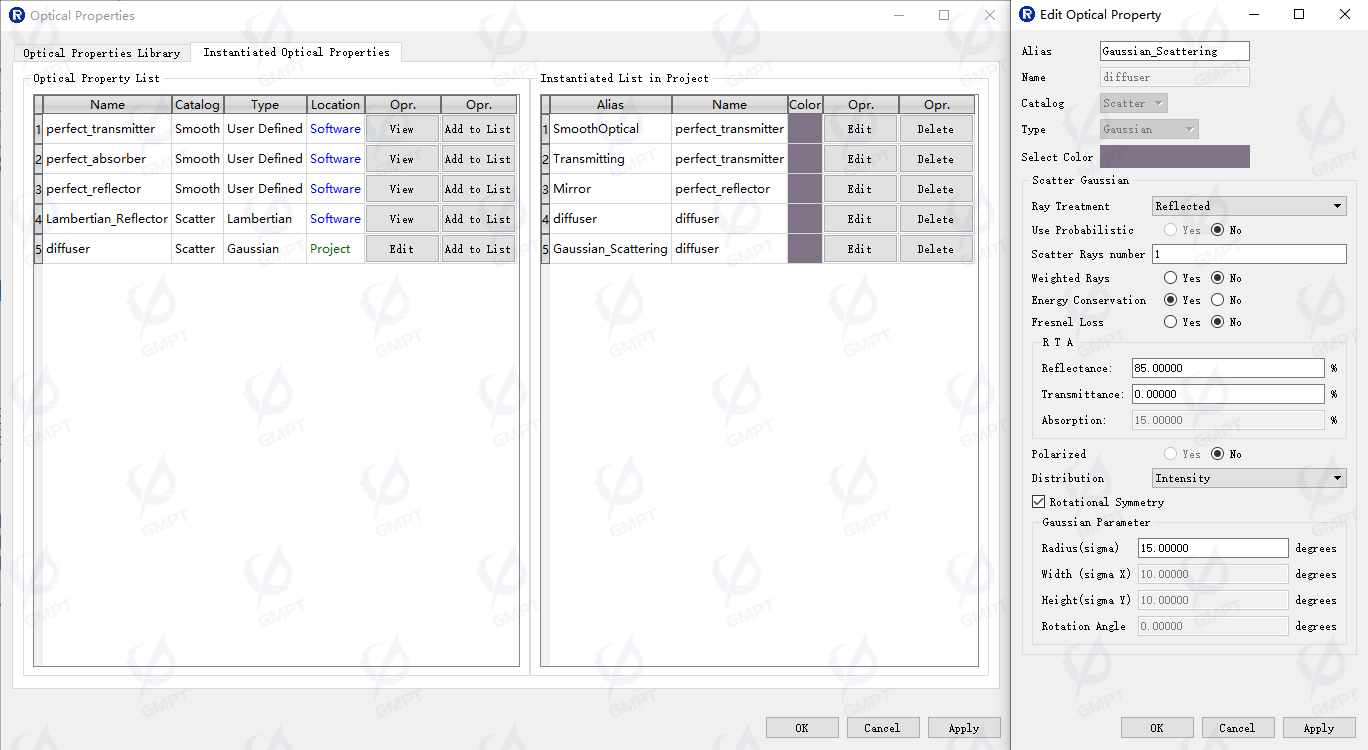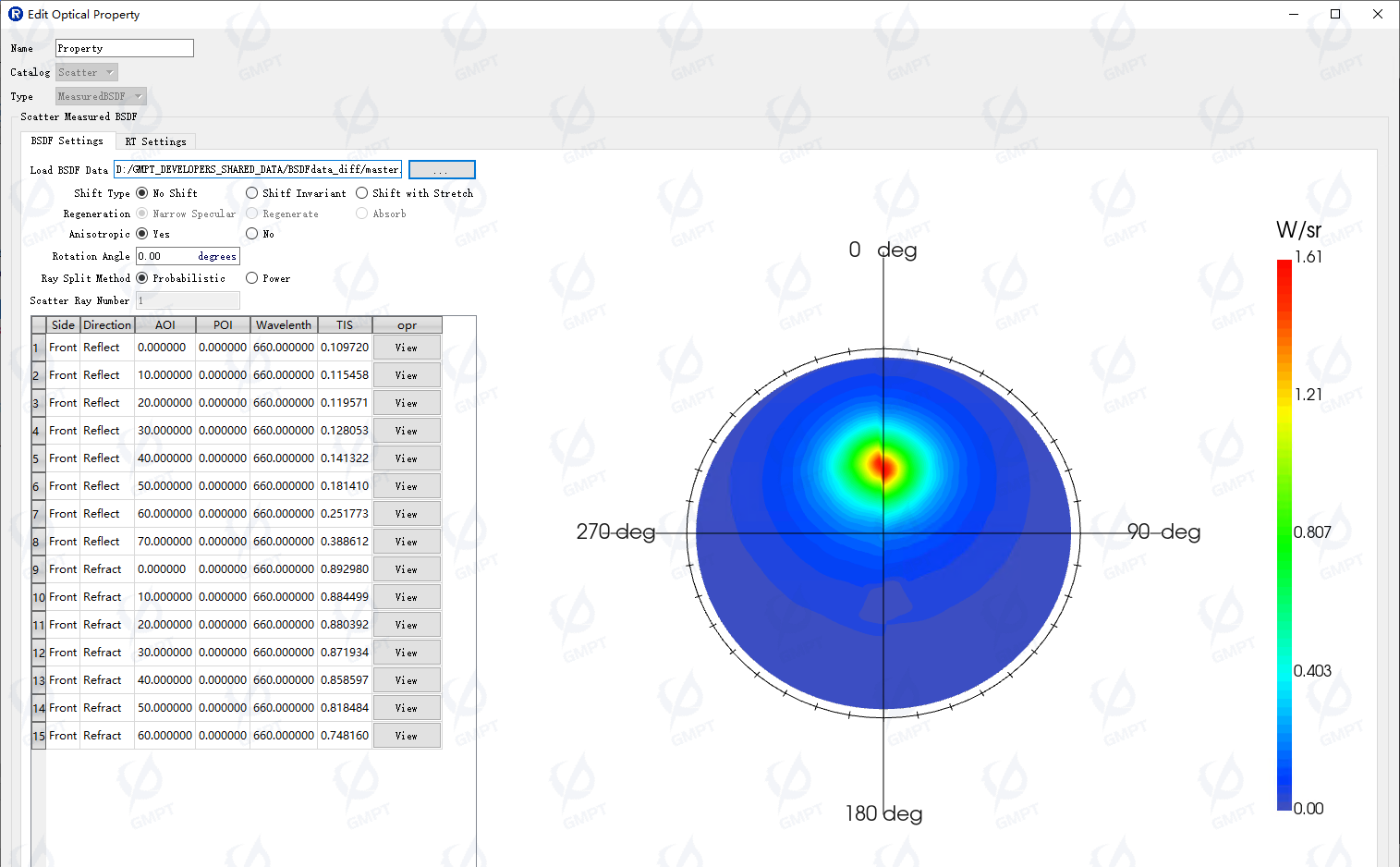Optical Property Library
GMPT, October 2024
Brief
Describing the physical properties of light using geometrical optics is a highly challenging task. The microscopic explanation of light interacting with discrete particles or medium surfaces can be referenced from the interference and elastic scattering theories in quantum mechanics. Geometrically, the exit angle and intensity of light may be redirected by the micro-morphology of a surface, resulting in scattering behavior. In Rayzen, scattering caused by the interaction of light with discrete particles is defined as volume scattering and is specified by the material model; scattering caused by interaction with medium surfaces is defined as optical properties. This distinction classifies the optical characteristics of materials into volume properties (refractive index, transmittance, volume scattering) and surface properties (surface scattering). Similar to the material library, Rayzen supports multiple ways to define optical properties, including ideal smooth surfaces and common empirical models such as Lambertian, Gaussian, ABg, and CosN scattering, as well as the import and further processing of measured BSDF datasets. Future releases will support complex models like grating scattering, Fresnel scattering, hybrid scattering, and contamination scattering. The essence of optical properties is to abstract the ideal reflection and refraction effects of micro-surface structures into empirical, parameterized models, ensuring simulation accuracy while avoiding complex CAD modeling, thus simplifying simulation setup.
In addition to scattering for directing light, other means can modulate various physical quantities of light at an object’s surface. For example, filters can select the wavelength of light passing through, polarizers can filter specific polarizations, and retarders can adjust phase to control polarization. The principles behind these optical control elements stem from materials’ effects through doping or specific crystal structures that absorb specific spectra or polarizations and slow down light in different ways. As many of these optical elements can be manufactured very thin, their thickness can be neglected in simulation results, allowing the use of theoretical models in place of geometric modeling and material characterization, simplifying simulation setup. Following industry conventions, Rayzen defines these theoretical models for optical elements as optical coatings, enhancing the completeness of optical properties. In the next version, Rayzen will support the use of optical coatings, significantly expanding the software’s application areas and industries.
Optical Property Model List
- Optical Properties
- Ideal Smooth Surface
- Scattering
- Lambertian Scattering
- Gaussian Scattering
- CosN Scattering
- Measured BSDF
- Abg
- Harvey-Shack
- Microfacet
- Grating

